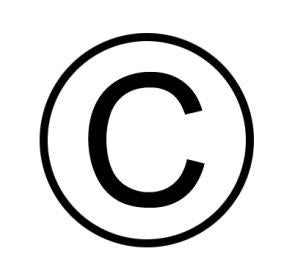On Wednesday, the U.S. Supreme Court issued its ruling in Star Athletica LLC v. Varsity Brands Inc., which, in the Court’s words “resolve[s] widespread disagreement over the proper test” for determining when “the design of a useful article is eligible for copyright protection.” Slip Op. at 1. Varsity Brands, a cheerleading uniform manufacturer, filed the copyright infringement case in 2010, alleging that Star Athletica copied various graphic aspects of its uniform designs, including stripes, chevrons, curves, lines and other elements, which were registered with the U.S. Copyright Office.
The primary issue on appeal was whether the uniforms’ graphic elements “can be identified separately from, and are capable of existing independently of” the underlying uniforms, which themselves are not independently eligible for copyright protection because they are useful articles. This requirement, known as “separability,” is set forth in the Copyright Act, 17 U.S.C. § 101, but courts have struggled with how it should be applied. After the district court ruled that the designs were not eligible for copyright protection because they served the “utilitarian function of identifying the garments as cheerleading uniforms,” 2014 WL 819422, the Sixth Circuit reversed, finding that the graphic elements of the uniform design met the Copyright Act’s separability requirement. 799 F.3d 468, 471 (6th Cir. 2015). The dissent noted, however, that existing law on separability, particularly in connection with apparel, was “a mess” and had been “for a long time.” Id. at 497.
Thus, the Supreme Court granted certiorari to resolve when an artistic feature is separable from an underlying useful article. Yesterday’s opinion sets forth a two-part test, holding that separability exists: “if the feature (1) can be perceived as a two- or three-dimensional work of art separate from the useful article and (2) would qualify as a protectable pictorial, graphic, or sculptural work either on its own or in some other medium if imagined separately from the useful article.” Slip Op. at 17. Finding that the graphic elements of the Varsity’s cheerleading uniforms satisfied this standard, the Court held that they are separable and may be entitled to copyright protection. Id. The Court did, however, caution that the reach of the holding should not be overstated:
To be clear, the only feature of the cheerleading uniform eligible for a copyright in this case is the two-dimensional work of art…respondents have no right to prohibit any person from manufacturing a cheerleading uniform of identical shape, cut, and dimensions to the ones on which the decorations in this case appear. They may prohibit only the reproduction of the surface designs in any tangible medium of expression—a uniform or otherwise.
Slip Op. at 12.
Importantly, this decision clarifies an issue that has long been in dispute and crystalizes the landscape for rights holders. For example, it eliminates legal uncertainties based on prior decisions and provides clarification on the following points: (1) both two and three-dimensional features are subject to the separability analysis; (2) once a feature is separable from the useful article, it is not relevant whether the underlying useful article is still useful or functional, and (3) it is irrelevant whether the design has been created in conjunction with the useful article at issue, another useful article, or separately. This separability test as articulated by the Court is straightforward and should be understandable to lawyers and laypersons. With the cloud of uncertainty surrounding the concept of “separability” removed, parties can more readily assess the merits of their cases and formulate strategies.
For example, under the Court’s test, a product designer may prefer to create a design that is clearly separable from the underlying useful article (i.e. using designs that are removable and have independent existence). This may cause design to evolve in a direction in which aesthetic features that add value to a product appear as surface decoration for items, such as apparel, wood sculpting on furniture, design on dinnerware, etc. On the other hand, the Court’s ruling may also discourage designers from using aesthetic features that are incorporated into the useful article.
Further, the decision will likely be seen as a win for the fashion industry, which in the past has pushed for increased protection for apparel designs in the U.S. through proposed legislation such as the Innovative Design Protection and Piracy Prevention Act. It will also likely lead many rights holders in the fashion industry to assert copyright as a new avenue for protection and, in turn, seek copyright registration, which confers significant benefits such as the ability to recover statutory damages and attorneys’ fees. See 17 U.S.C. § 412. Finally, the decision may have a pro-competitive impact by causing designers to “design around” existing designs, resulting in more choices for consumers.





 i
i

